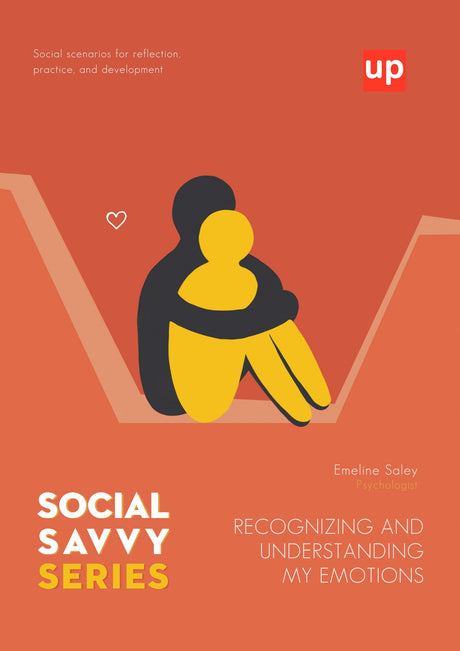Navigating daily life presents distinct challenges for individuals with autism; however, through the implementation of effective strategies, it can become a rewarding pursuit towards growth and independence. At the forefront of this approach is the concept of structure, a comprehensive framework that provides essential predictability and comfort, ultimately facilitating the reduction of anxiety and the promotion of emotional stability. By incorporating specific techniques, such as consistent routines and visual supports, it is possible to cultivate an environment conducive to enhanced communication and independence.
Key Takeaways
- Establishing consistent routines and structured environments is essential for individuals with autism, as it reduces anxiety, promotes emotional stability, and fosters greater independence.
- Visual supports, such as visual schedules and structured work systems, play a critical role in enhancing comprehension, facilitating smoother transitions, and supporting communication for autistic individuals.
- Family involvement and personalized routines tailored to individual needs significantly improve the effectiveness of autism structure, promoting skill development and overall well-being.
Creating and Maintaining Autism Structure: Consistent Routines

Implementing a structured routine is a vital strategy for individuals with autism, offering numerous benefits that enhance their daily lives. Recent autism research has shown that structured routines can significantly improve behavioral outcomes and emotional well-being for those with autism spectrum disorder. Autism spectrum disorder often involves challenges in adapting to change or unpredictability. Therefore, having a consistent routine fosters stability and aids in behavioral management. These structured routines act as a roadmap for individuals with autism, guiding them through their day with reduced uncertainty. The profound impact of structured routines is evident in their ability to reduce anxiety, foster a sense of security, and promote greater independence for individuals with autism. The clear expectations and transitions that routines provide not only facilitate easier navigation of daily activities but also promote independence and self-sufficiency. Furthermore, collaborating with a pediatrician can lead to personalized strategies that address specific challenges and support developmental milestones through these structured routines. Structured environments in autism therapy form an essential framework that enhances learning outcomes while promoting emotional stability.
Introduction to Routines
Establishing routines is a crucial aspect of supporting individuals with Autism Spectrum Disorder (ASD). For those on the autism spectrum, a structured routine provides a foundation of predictability and stability, which is essential for managing behaviors and promoting emotional well-being. By incorporating visual schedules and visual cues into daily routines, caregivers can create a supportive environment that not only reduces anxiety but also fosters independence. Consistent daily routines help autistic individuals understand what to expect, making transitions smoother and daily life more manageable. Effective routines are key to supporting individuals on the autism spectrum, as they contribute to overall well-being and help build the skills necessary for greater autonomy. In this article, we will explore the importance of establishing routines and share strategies for maintaining them to enhance the well-being of autistic individuals.
Understanding Autism
Autism Spectrum Disorder (ASD) is a complex neurodevelopmental condition characterized by social communication impairments, repetitive patterns of behavior, and challenges with emotional regulation. Many autistic individuals find it difficult to cope with unexpected changes, transitions, or unpredictable environments, which can lead to heightened anxiety and increased stress levels. Creating a structured environment that incorporates visual supports and predictable routines can help alleviate these challenges and promote overall well-being. By understanding the unique needs and preferences of those on the autism spectrum, caregivers and educators can develop tailored strategies that support development, encourage emotional regulation, and enhance quality of life. Incorporating visual supports and maintaining predictable routines are important strategies for reducing stress and supporting the emotional health of autistic individuals.
Benefits of Routine in Reducing Anxiety
Predictable routines significantly benefit individuals with autism by reducing anxiety and providing a sense of control. Knowing what to expect and when helps them anticipate and prepare for activities, making daily life less daunting. Establishing a predictable routine helps reduce anxiety and improve transitions by offering structure and stability throughout the day. A stable and familiar environment leads to a reduced sense of uncertainty, directly impacting an individual’s anxiety levels. Consistent daily schedules, meticulously established by parents, offer children with autism a clear understanding of upcoming events. The repetitive nature of these routines serves as a cushion against the world’s unpredictability, making transitions smoother and less stressful. Implementing structured activities, along with visual aids, can mitigate stress and anxiety associated with unforeseen changes, thereby promoting predictability and consistency which is critical to their peace of mind. Additionally, providing concise instructions alongside visual aids is essential for improving comprehension and reducing anxiety during transitions.
Promoting Emotional Stability through Consistency
Consistent routines are crucial in promoting emotional stability for individuals with autism. An established routine provides emotional stability, supports behavior management, and helps develop social skills by offering a predictable daily pattern. They help alleviate anxiety, reduce problem behaviors, and enhance overall emotional well-being by providing a stable and organized framework. For autistic individuals, predictability in their daily schedules fosters a sense of security and control, enabling them to navigate their world confidently. Establishing a regular schedule, which includes consistent meal times, playtimes, and bedtimes, creates an organized environment that nurtures emotional stability. Structured routines are interconnected with predictable environments, minimizing anxiety related to unpredictability. This enhanced predictability translates into better emotional regulation for individuals on the autism spectrum, leading to meaningful improvements in their everyday lives. Utilizing visual schedules and transition cues further supports children with autism by easing them into changes, reinforcing their emotional security and independence.
Brain Function and Routine
Research into autism spectrum disorders has revealed that autistic individuals may experience differences in brain structure and function, particularly in areas related to emotional processing and social cognition. These structural differences can make it more challenging to interpret social cues and manage emotions, especially in unpredictable situations. Implementing a consistent routine can play a critical role in mitigating these challenges by providing a sense of predictability and control. Visual schedules and visual aids further enhance comprehension and facilitate smoother transitions, helping to reduce anxiety and stress levels. By understanding the critical role that routine plays in supporting brain function and development, caregivers can implement strategies that promote positive behaviors, enhance comprehension, and support the overall well-being of autistic individuals. Consistent routines and visual supports are essential tools for fostering smoother transitions and supporting emotional health.
Enhancing Communication through Structured Activities
Structured activities are foundational tools for fostering social communication skills in individuals with autism spectrum disorder (ASD). These activities also provide valuable opportunities for developing social skills, such as turn-taking, social interaction, and building relationships. These activities are carefully planned with clear goals and guidelines, making them highly effective in creating enjoyable and educational experiences. For individuals on the autism spectrum, the predictability and structure of these activities are important in enhancing communication by minimizing uncertainty and related anxiety. Structured activities help individuals understand expectations, which reduces anxiety and improves communication. Visual supports often accompany these activities to aid comprehension, allowing individuals to express themselves more clearly. The stability provided by structured routines is equally crucial, as it helps reinforce communication ability by offering a secure environment where autistic individuals feel comfortable to interact.
Utilizing Visual Supports for Better Communication
Visual supports, such as schedules and aids, are invaluable in crafting structured environments beneficial for individuals with autism. These tools provide a concrete representation of daily activities, visually depicting routines to help autistic individuals understand, anticipate, and manage their day more effectively. These tools serve as tangible representations of daily activities, mitigating anxiety and fostering independence through their predictable nature. With the integration of pictures, symbols, or written words, visual cues present autistic individuals with a clear understanding of daily sequences. This clarity aids in smoother transitions from one task to another, reducing stress and enhancing overall comprehension. By implementing visual supports in educational settings, autistic children can leverage their visual strengths to better understand daily expectations, promoting self-monitoring and supporting independence.
Structured Work Systems for Independence
The Division TEACCH's structured work systems are designed to enhance independence in individuals with autism through the use of visual cues. These systems deliver explicit instructions detailing task requirements, ensuring individuals understand what needs to be done, how much work is involved, and what follows. This clarity benefits autistic individuals by enabling them to comprehend expectations more effectively, thereby boosting their confidence in task completion. By fostering consistent routines and establishing a structured environment, these systems contribute positively to the social and emotional well-being of individuals with autism, increasing their chances of success. The predictability inherent in structured work systems also plays a significant role in anxiety reduction, allowing individuals on the autism spectrum to navigate tasks with increased confidence and independence.
Using Visual Schedules and Supports

Visual schedules and supports play a crucial role in helping individuals with autism navigate their daily lives with greater ease and independence. A visual schedule is a tool that uses images, symbols, or words to outline daily routines, helping structure activities in a way that is accessible and easy to understand. These tools provide a visible representation of daily activities, which is particularly beneficial for those who thrive on structure and routine. By outlining daily, weekly, or monthly routines, visual schedules create a predictable framework that fosters autonomy and independence in autistic individuals. This predictability helps reduce anxiety associated with the unpredictability of daily life, enabling more manageable and smoother transitions from one activity to the next. Visual schedules provide a clear and tangible way to illustrate daily activities, supporting understanding and reducing anxiety. Visual supports, which can include choice boards, checklists, and diagrams, cater to different learning styles by enhancing comprehension and communication through visual means. Incorporating visual elements in this way allows children with autism to better understand the sequence of events, promoting clarity and a greater sense of security within their routines.
The Role of Visual Schedules in Managing Transitions
Transitions can be particularly challenging for individuals with autism due to the unpredictability they often entail. Visual schedules serve as essential tools by providing a roadmap that helps reduce anxiety during these periods of change. By offering a clear visual representation of what comes next, these schedules allow individuals to anticipate and prepare for upcoming transitions. This understanding minimizes stress and fosters a greater sense of control. Using visual cues in schedules not only aids in comprehension but also enhances the ability to manage routines confidently. These visual cues are especially effective in promoting smoother transitions for individuals with autism, as they provide predictable signals that reduce anxiety and support flexibility. Customizable elements, such as pictures or symbols, cater to individual preferences, increasing the effectiveness of visual schedules in managing transitions. Additionally, incorporating flexible components, like adding new tasks, can teach individuals with autism how to handle unexpected changes within structured environments, promoting adaptability and resilience.
Providing Predictability and Comfort with Visual Aids
Visual aids such as visual schedules and structured work systems are invaluable for individuals with autism, offering predictability that reduces anxiety and enhances their ability to manage daily routines. Maintaining a consistent schedule further contributes to this predictability and comfort, helping individuals with autism feel secure and better prepared for daily transitions. By integrating visual strategies into daily life, these tools simplify communication and learning, making activities and transitions more predictable and understandable. Timers and countdowns are effective visual cues that aid in transitioning between activities, providing reassurance and structure. The consistent use of visual supports contributes to a sense of order and stability, fostering an environment of emotional well-being. This structured environment allows individuals with autism to anticipate daily events, which reduces stress linked to unpredictability. Ultimately, through the use of visual aids, individuals gain a clearer understanding of time and events, enhancing their emotional preparedness and promoting a more comforting and predictable daily routine.
Implementing Tailored Routines Based on Individual Preferences
Creating tailored routines for individuals with autism involves understanding and incorporating their unique preferences and strengths into daily activities. It is important to establish routines that are personalized to individual preferences and strengths, as this creates structure, predictability, and a sense of security. These routines not only enhance motivation but also foster a sense of security and predictability, which is crucial for emotional well-being. By thoughtfully embedding preferred activities into structured routines, caregivers can increase engagement and adherence to daily tasks. Such personalized routines can significantly aid in reducing anxiety by providing a consistent and reliable framework. This targeted approach also facilitates smoother transitions between activities, promoting a balance of structure and flexibility that accommodates individual needs, ultimately leading to more positive outcomes.
Assessing Individual Needs and Preferences
Understanding the unique needs and preferences of individuals with autism is essential in crafting effective routines. Collaborative efforts between therapists, families, and caregivers play a crucial role in this process. Preparing children for changes in routines, especially by using visual supports and involving family, is important to reduce anxiety and promote adaptability. By using visual supports and structured environments, individuals with autism can better anticipate changes, reducing dependency on prompts. Pediatricians also provide valuable insights into the specific behavioral challenges and preferences of children with autism. Tailoring strategies in both therapeutic settings and at home requires careful consideration of each individual’s preferences, ensuring that routines integrate seamlessly into their daily lives, thereby enhancing their independence and emotional well-being.
Adapting Routines for Optimal Engagement
Adapting routines to suit the specific needs of individuals with autism can significantly enhance their engagement and overall experience. A structured routine not only provides stability but also boosts predictability, which is particularly beneficial for reducing anxiety. Consistent routines offer opportunities to develop essential life skills such as time management and self-care through repeated practice. In addition, consistent schedules help make learning environments predictable and support engagement, motivation, and independence for individuals with autism. By collecting data, caregivers can monitor progress and adjust routines accordingly to maximize effectiveness. Collaborating with a pediatrician can provide personalized strategies to maintain effective routines, addressing any behavioral challenges and supporting developmental milestones. This approach ensures that individuals with autism can navigate transitions smoothly, bolstered by a clear and structured routine.
Role of Parental Involvement in Structured Environments

Parental involvement is fundamental in constructing structured environments for children with autism. Family involvement is especially important in establishing and maintaining routines for children with ASD, as it strengthens consistency, fosters social connections, and supports emotional well-being across different settings. A thoughtfully organized setting can offer children a sense of security, predictability, and stability, which are crucial in managing their autism spectrum disorder. Structured environments provide children with ASD the stability and predictability they need to navigate their environment effectively and reduce anxiety during transitions. Parents play a pivotal role in implementing consistent routines that cater to their children’s specific needs, promoting their independence and emotional well-being. By incorporating visual supports like visual schedules and visual cues, parents can help children navigate their daily routines with reduced anxiety and increased confidence. Collaboration with pediatricians and therapists also empowers parents to develop effective strategies that foster developmental milestones and emotional regulation. Ultimately, the active participation of parents in establishing structured environments is instrumental in aiding their children’s growth and social interaction capabilities.
Encouraging Family Participation
Family participation plays a vital role in creating consistent routines for children with autism. When family members work together to reinforce established routines, it helps children feel more secure and improves their ability to adapt to different settings. Open communication within the family is crucial in sharing insights about the child's preferences and necessary accommodations, ensuring a smooth implementation of structured routines. Engaging multiple family members not only reinforces routines but also provides ample opportunities for social interaction and fosters family bonding. This collaborative approach enhances the consistency and effectiveness of routines, creating a supportive environment for the child. By being flexible and accommodating individual differences, families can develop routines that are personalized and adaptable, ultimately supporting the child's well-being and developmental progress.
Strategies for Consistent Parental Support
Consistent parental support is key to creating structured environments that promote effective autism therapy. Establishing predictable daily routines, such as regular mealtimes and bedtimes, is essential in minimizing anxiety and providing a comforting sense of familiarity for the child. These structured routines not only reduce stress but also help teach crucial life skills and strengthen family bonds. With guidance from pediatricians, parents can create and maintain effective routines tailored to address specific behavioral challenges and developmental goals. Employing communication tools like visual or auditory timers aids parents in helping their children manage transitions smoothly, ensuring consistency in their routines. By adopting these strategies, parents can build a nurturing environment that supports their children's growth and enhances their ability to navigate everyday life independently.
Integrating Applied Behavior Analysis (ABA) Principles

Applied Behavior Analysis (ABA) is a scientific approach that applies principles of behavior to assist individuals with autism spectrum disorder in developing essential life skills. In ABA, structured teaching strategies are used to support learning and independence, especially for autistic students, by providing clear routines, visual supports, and consistent expectations. One of the core tenets of ABA is to establish effective routines by breaking down complex activities into manageable steps using task analysis. This methodology allows individuals to tackle tasks gradually and with more confidence. Furthermore, techniques such as prompting and shaping are used to help guide autistic individuals through daily tasks and transitions more efficiently. Reinforcement, a pivotal principle of ABA, encourages and strengthens desired behaviors by providing rewards, thus motivating individuals to sustain positive actions. Additionally, the principle of generalization ensures that skills and behaviors learned through ABA can be applied across various environments. The importance of classroom structure is emphasized in ABA to support autistic students, as a well-organized environment and clear routines help promote engagement, independence, and targeted support. Through meticulous data collection, ABA therapy customizes interventions to align with an individual’s progress, ensuring that the establishment of structured routines remains dynamic and effective. ABA principles are often tailored to meet the unique needs of autistic students in educational settings, supporting their learning, independence, and social integration.
Overcoming Challenges in Routine Maintenance
Maintaining a consistent routine for autistic individuals can be challenging, especially when unexpected events or changes disrupt established patterns. However, with the right strategies and support, caregivers can overcome these obstacles and continue to provide effective routines. Incorporating visual supports, such as visual schedules and tactile symbols, helps autistic individuals understand and navigate daily routines, even when changes occur. Providing a quiet space for self-regulation allows individuals to manage their emotions and reduce anxiety during times of transition. Positive reinforcement for desired behaviors encourages independence and helps maintain motivation. By being flexible and adaptable, caregivers can create a supportive environment that promotes overall well-being and helps autistic individuals thrive, even in the face of unexpected events. These strategies ensure that daily routines remain effective and contribute to the well-being of autistic individuals.
Conclusion
In conclusion, establishing and maintaining routines is a critical aspect of supporting individuals with Autism Spectrum Disorder (ASD). By incorporating visual schedules, consistent daily routines, and predictable environments, caregivers can create a supportive environment that fosters independence, reduces anxiety, and promotes overall well-being. Understanding the unique needs and preferences of autistic individuals, as well as the critical role of routine in brain function and development, is essential for developing effective strategies to support their development and enhance their quality of life. By working together, caregivers, educators, and researchers can create a more inclusive and supportive environment that promotes positive outcomes for autistic individuals and their families.
Upbility materials offer valuable resources designed to support individuals with autism in establishing and maintaining structured routines. These materials include visual schedules, work systems, and other visual supports that are tailored to meet the unique needs of autistic individuals. By incorporating Upbility materials into daily routines, caregivers and educators can enhance predictability, reduce anxiety, and promote greater independence. Their user-friendly design and customizable features make them an effective tool in creating a supportive environment conducive to skill development and emotional well-being.
Frequently Asked Questions (FAQ)
What is autism structure and why is it important?
Autism structure refers to the organized and predictable framework of routines, environments, and supports designed to meet the unique needs of individuals with autism spectrum disorder. It is important because it provides stability, reduces anxiety, and promotes independence by helping autistic individuals understand what to expect throughout their day.
How do visual schedules support individuals with autism?
Visual schedules offer a clear, concrete representation of daily activities and routines using images, symbols, or written words. They help autistic individuals anticipate upcoming events, reduce anxiety related to transitions, and enhance comprehension, thereby promoting smoother transitions and greater independence.
What role do consistent routines play in autism therapy?
Consistent routines provide predictability and structure, which are critical for emotional regulation and behavioral management in individuals with autism. They reduce uncertainty, help manage anxiety, and support the development of essential life skills such as time management and self-care.
How can parents and caregivers implement structured routines at home?
Parents and caregivers can implement structured routines by establishing predictable daily schedules, incorporating visual supports like visual schedules and cues, offering clear and concise instructions, and creating quiet spaces for self-regulation. Collaboration with therapists and pediatricians can further tailor routines to individual needs.
What are structured work systems and how do they benefit autistic individuals?
Structured work systems are visually cued setups that clearly outline tasks, their sequence, and completion criteria. They help autistic individuals understand expectations, increase independence, reduce anxiety during tasks, and promote confidence and skill development.
How does Applied Behavior Analysis (ABA) support routine development?
ABA utilizes structured teaching strategies, task analysis, and positive reinforcement to help individuals with autism learn and maintain daily routines. It breaks tasks into manageable steps, encourages desired behaviors, and facilitates generalization of skills across settings, fostering greater autonomy.
Why is flexibility important within structured routines?
While structure provides predictability, flexibility allows individuals with autism to adapt to unexpected changes without becoming overwhelmed. Incorporating flexibility within routines helps build resilience, coping skills, and promotes a balanced approach to daily activities.
How does family involvement impact the success of structured environments?
Family involvement strengthens consistency across settings, reinforces routines, and fosters social connections. Active participation by family members enhances emotional well-being and supports skill development, making structured environments more effective for autistic individuals.
Can structured routines improve social skills in children with autism?
Yes, structured routines create predictable opportunities for social interaction, turn-taking, and communication practice. By reducing anxiety and providing clear expectations, routines support the development of social skills essential for meaningful relationships.
What strategies can help maintain routines during unexpected events?
Using visual supports to prepare for changes, creating calm down spaces, providing clear instructions, and employing positive reinforcement can help maintain routines during disruptions. Flexibility and proactive planning also play key roles in managing unexpected events effectively.
Original content from the Upbility writing team. Reproducing this article, in whole or in part, without credit to the publisher is prohibited.
References
-
Ozonoff, S., Dawson, G., & McPartland, J. (2002). A Parent’s Guide to Asperger Syndrome and High-Functioning Autism: How to Meet the Challenges and Help Your Child Thrive. Guilford Press.
-
Mesibov, G. B., Shea, V., & Schopler, E. (2005). The TEACCH Approach to Autism Spectrum Disorders. Springer Science & Business Media.
-
Schreibman, L. (2005). The Science and Fiction of Autism. Harvard University Press.
-
National Autism Center. (2015). National Standards Project, Phase 2. Retrieved from https://www.nationalautismcenter.org/national-standards-project/
-
Wong, C., Odom, S. L., Hume, K. A., Cox, A. W., Fettig, A., Kucharczyk, S., ... & Schultz, T. R. (2015). Evidence-Based Practices for Children, Youth, and Young Adults with Autism Spectrum Disorder: A Comprehensive Review. Journal of Autism and Developmental Disorders, 45(7), 1951-1966.
-
Lord, C., Elsabbagh, M., Baird, G., & Veenstra-Vanderweele, J. (2018). Autism Spectrum Disorder. The Lancet, 392(10146), 508-520.









